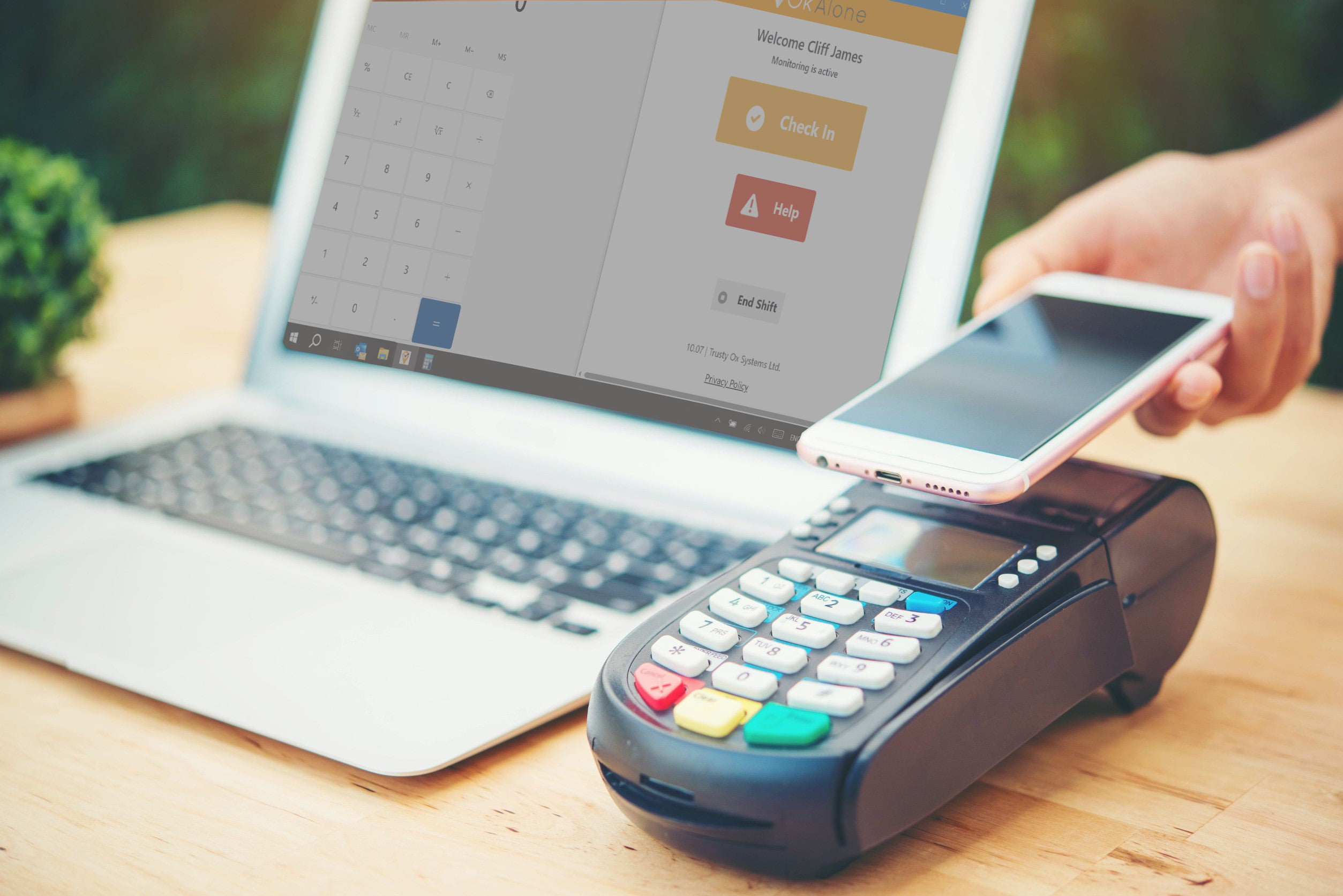Introduction
In today’s rapidly evolving work places, the conventional nine-to-five office job is increasingly becoming a thing of the past. The digital revolution has changed work patterns, one of which is lone working—a practice that has grown exponentially in the last few years. No longer tethered to a physical office, professionals across industries are embracing the freedom, flexibility, and innovation that come with working alone. But what powers this trend? How has technology acted as the foundation in facilitating safe lone working?
This article delves into the intriguing world of lone working in the digital age looking at how advancements in technology have paved the way for this shift, making it easier for individuals to work independently yet stay interconnected. We’ll discuss the history of lone working, and shed light on how developments in infrastructure have helped make lone workers safer.
How were Lone Workers Protected in the Past?

Being a lone worker has always been more high-risk than being part of a team. Not because the tasks undertaken are inherently more dangerous, but because if something did go wrong at any point, there are no colleagues around to help. To try and reduce the risks to lone workers companies developed systems to help them feel more connected and allow employers to know where they were and that they were ok.
Many companies adopted the ‘Buddy’ system where workers were paired up and had to contact each other throughout a shift to make sure their ‘Buddy’ was all right. This, like many manual systems, relied heavily on both parties remembering to check in with their partner. Other manual systems required office staff to spend a large part of their day calling round every worker who was off-site (but had access to a landline) to make sure they were well. If it was a large organisation this could take hours and result in each employee only being spoken to once a shift, if at all.
Finally, the clocking in and out system required staff to physically visit their workplace to have a piece of card punched with the time they started their shift and then not be contacted again until they returned to punch out at the end of their shift. This system was definitely the most high-risk for those working by themselves over long periods of time.
The Digital Transformation and Lone Working
Having access to computers revolutionised the way we work and with the internet being available to the mainstream public since 1995 things drastically changed again. Mobile phone availability from the mid 1990’s meant people lone working could speak to others without the need for a landline, however, their means of checking in with management stayed the same. Members of staff were still required to call workers throughout their day to check their status and well-being or workers had to remember to call each other, checking their ‘Buddy’ was ok. In the late 1990s, mobile phone technology underwent significant transformations that laid the groundwork for the smartphones we use today. Features like text messaging (SMS), basic games, and rudimentary internet browsing started to appear. During this era, mobile phones shifted from being bulky, single-function devices primarily used for voice communication to more compact and feature-rich gadgets.
The Rise of Smartphones and Lone Working
Since the invention of the smartphone, technology has been progressing at a breakneck speed. In 2001 it became possible for smartphones to connect to the 3G network and the internet, allowing people to send emails and video call from the palm of their hand. Once Apple released the iPhone in 2007 the number of people across the world who had a smartphone skyrocketed.
There are currently 6.719 billion smartphone users worldwide.¹ This figure has increased year on year by at least 250 million. The extensive global ownership of smartphones makes them the perfect device to progress lone worker safety.
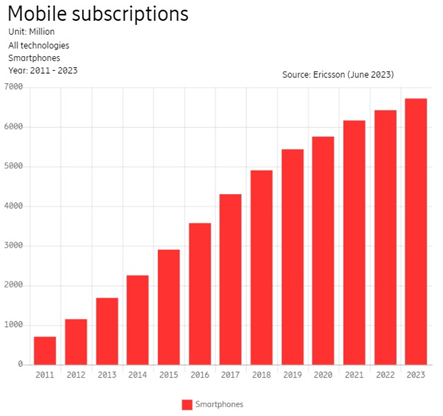
| Year | Smartphone Users | Growth Over Previous Year |
| 2011 | 706 million | – |
| 2012 | 1.150 billion | + 444 million |
| 2013 | 1.686 billion | + 536 million |
| 2014 | 2.255 billion | + 569 million |
| 2015 | 2.903 billion | + 648 million |
| 2016 | 3.575 billion | + 672 million |
| 2017 | 4.303 billion | + 728 million |
| 2018 | 4.907 billion | + 604 million |
| 2019 | 5.436 billion | + 529 million |
| 2020 | 5.758 billion | + 322 million |
| 2021 | 6.165 billion | + 407 million |
| 2022 | 6.422 billion | + 257 million |
| 2023 | 6.719 billion | + 297 million |
The ease of access to smartphones meant they could be widely distributed to employees or that the vast majority of employees would already have a personal device. Through this availability it was easy for companies to deploy safety measures across a workforce without having to purchase additional expensive hardware. Apple and Android launching their app stores in 2008 opened up the market for individuals to develop their own apps. This meant apps focussing on different industry needs, such as lone worker safety, began to make their way into the market over the next few years.
Lone worker apps allowed the manual techniques of checking in to become fully automated. With the ability to be pre-set to specific intervals, the apps included count-down timers that asked workers to check their status by clicking a button. No longer were staff required to call workers to check on them throughout the day. If a worker did not respond to the status request an alert would be sent to their monitor requesting immediate assistance.
GPS Technology working for lone workers
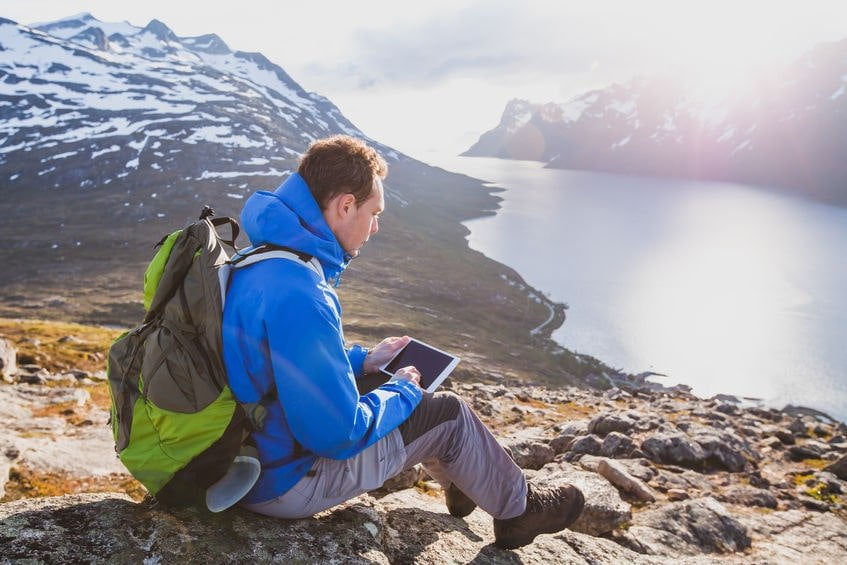
The main feature that revolutionised lone worker apps is their ability to link to GPS (global positioning satellites) to give accurate locations for workers in distress. Trilateration is the basic concept that drives the accuracy of GPS. Each of the 29 satellites in the GPS network circles the earth twice daily. The total of 29 (24 operational, 5 backups) was reached because, with this number, at a minimum four satellites would always be visible from any point on Earth. These four satellites could then be used to create an accurate location for a person or place.²
The GPS receiver installed on a computer chip within a smartphone receives data from these satellites and the data is used by a software program to show the current location on a real-time map. Lone worker apps, through this software, can then map to a destination, track progress and provide countless other useful functions.³
The most recent smartphone development to change the lone worker industry has been the advancement of voice commands. Setting up voice commands on the handset allows workers to open the app, start a shift, check in, end a shift and most importantly, request help, all without touching their phone. This allows so many people across different industries to complete their jobs in a safer manner. Those working in transportation no longer need to take their eyes off the road, people working in labs do not have to stop mid task, someone up a ladder doesn’t need to let go to check in. Another fantastic use is for someone who has already had an accident to request immediate help, even if they can’t move or access their phone physically.
Motion detection and image orientation
In the early 2000’s the technology within the cell phone handset itself developed. An accelerometer was introduced to phones in order to alter the orientation of the screen, from portrait to landscape or vice versa depending on what was better for viewing the image or game. This technology that had been widely used in the Nintendo Wii handset allowed people to use the controller as an extension of themselves into the game, for example as a tennis racquet or steering wheel. In Asia during 2005 Samsung and Sharp released new model phones that had a three-axis accelerometer utilising motion-sensing technology built in. ⁴ This allowed the tilt sensor to manage the view of any image on the device.
Another benefit of the accelerometer was it could assess if the phone was in motion. This technology was perfect for lone workers as it allowed a worker’s movement to be detected whilst carrying out tasks. They could activate the Man/Worker Down feature on their smartphone and if they had an accident and were rendered unconscious, the phone would alert their management that there had been no movement from the device. This is the perfect safety net for people working in isolation.
How Infrastructure Has Helped Keep Lone workers Safe
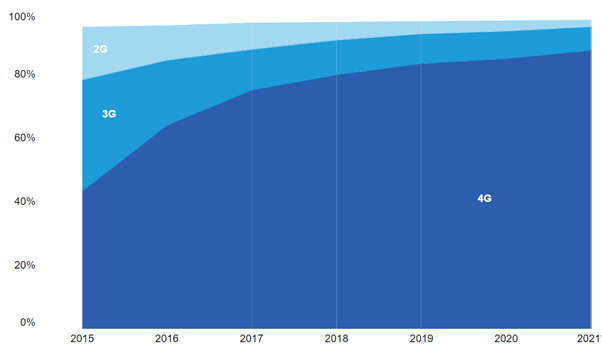
Ninety-five per cent of the world population now has access to a mobile broadband network. Between 2015 and 2021, 4G network coverage doubled to reach 88 per cent of the world’s population. In most developing countries, mobile broadband (3G or above) is the main way to connect to the Internet.⁶
The 4G network began in the 2000s, the first service was deployed in Stockholm and Oslo in 2009, and global expansion of the network followed shortly thereafter. As of 2020, there were an estimated six million 4G towers throughout the world with 300,000 located in the United States. ⁷
5G is the newest generation of wireless connectivity which started being rolled out in 2019. As the next generation it has much faster speeds than 4G and has a bigger capacity so more users can be online at any time. 5G uses the three frequency ranges that are currently available to increase its global coverage.⁸
Increasing safety with internet coverage
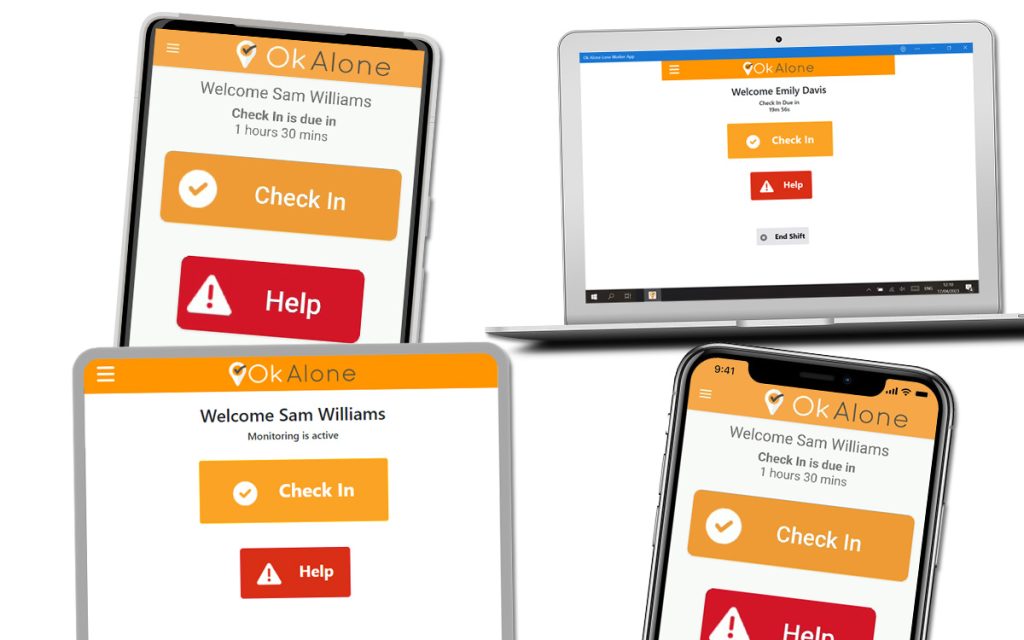
Having far reaching internet that is widely available means there is more connectivity and better coverage for those people working on their own. Having access to the internet allows lone workers to use their phone signal or wi-fi to keep in touch with their employers by using their safety monitoring app.
The broad coverage of accessible internet also means lone worker solutions can exist online in the Cloud and be viewed from anywhere in the world. “The Cloud” refers to servers that are accessed over the Internet, and the software and databases that run on those servers. Cloud servers are located in data centres all over the world.⁹ Instead of accessing files and data from a local or personal computer, information is stored and accessed online from any Internet-capable device.
This ties into the final development in technology that assists lone workers. Having a company’s lone worker account connected to the Cloud means they can access their personal dashboard from anywhere, on any mobile device. They are able to see maps that show the real-time locations of any workers on shift, see the request and position of any worker requesting help and access the personal details of any worker who has missed a check in.
Conclusion
The progression of technology over the last 30 years has been staggering and the impact it has had on lone worker safety is immeasurable. Instead of relying on a Buddy to check on co-workers or having to clock in and out for a shift, people who work on their own have a level of connection and safety that never existed before. Having an app in your pocket that can be used to request help, can summon help even if you can’t (using the Worker Down feature) and give a precise location of where you are means lone workers can go about their day knowing they have the latest technology on their side.
Technology is not just adding new tools to the toolkit of lone working; it’s fundamentally reshaping how we think about, talk about, and practice working alone. By transforming practices, technology is helping to create a safer, more connected, and more responsive environment for lone workers, recognizing their unique contributions and challenges within the modern workplace.
2 – Marshall Brain and Tom Harris. “How GPS Receivers Work.” How Stuff Works. 2 Feb. 2005.
3 – Graham Prophet. “Zero in: GPS options expand with applications.” EDN. 19 Sept. 2002 : 42-56.
4 – https://www.zdnet.com/article/motion-sensing-comes-to-mobile-phones/
5 & 6 – https://www.itu.int/itu-d/reports/statistics/2021/11/15/mobile-network-coverage/
7 & 8 – https://history-computer.com/4g-guide/
9 – https://www.cloudflare.com/en-gb/learning/cloud/what-is-the-cloud/

As an expert in lone worker content management, I possess an extensive knowledge base and experience in the area of lone working and safety monitoring. My expertise in this field encompasses a wide range of areas, including risk assessment, training, communication, and technology. I have a deep understanding of the unique risks associated with lone workers and have researched and written many projects and articles to educate people in how to mitigate these risks.
Throughout my time with Ok Alone, I have kept up to date with technological developments, legislative changes and regulations that have been introduced to help organizations ensure the safety of their lone workers.

